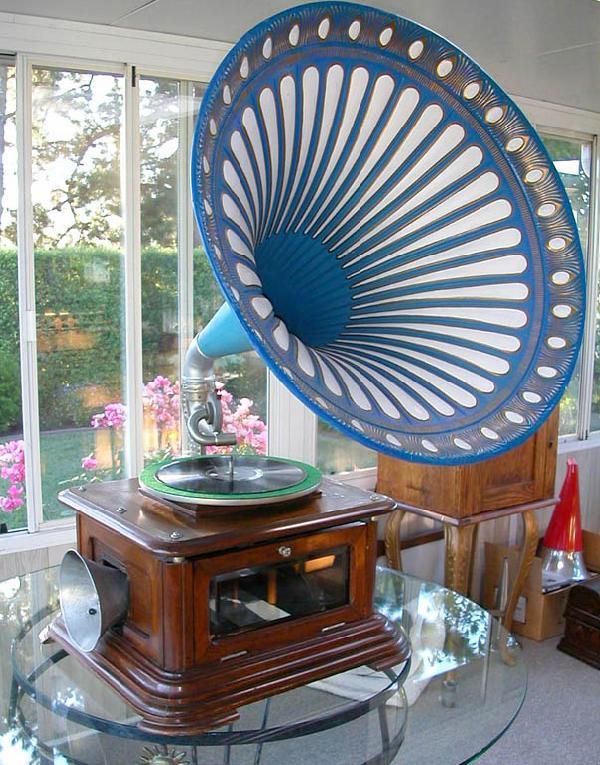

For phonographs of the late 1880s and early 1890s the power source of choice
was electricity, with messy, heavy, and dangerous wet-cell batteries. When spring
motors were developed in the mid 1890s it was a godsend for the average homeowner
and increased sales dramatically, but these also had a disadvantage -- they required
frequent winding. Until electricity became commonplace in homes in the 1920s there
really were few options for low-maintenance, reliable phonograph motors that could
run unattended for long periods. The strangest and least successful of the possible
options was this Paillard "Maestrophone"-- powered, oddly enough, by hot
air.
Hot air motors had been in use for nearly a century when this phonograph
was introduced in 1910. Developed and patented in 1816 by a Scottish minister, Robert
Stirling, hot air external combustion motors were very well-suited for small-scale
applications where steam engines were too cumbersome or too dangerous, such as water
pumps on farms. Until the advent of easily available electric power, Stirling motors
were used in many machines -- even, as incongruous as it may seem, for fans, with
a hot kerosene lamp supplying the energy to cool people on a warm day. While Stirling
motors were, and still are, very popular among aficionados (there are large communities
of hot air motor devotées on the Internet), it was a very dubious choice for use in
a phonograph.
To power the turntable of the Paillard Maestrophone, an alcohol
burner inside the cabinet heats the turbine, causing air to expand and push a piston.
Cool air on the other side of the motor reverses the process. The constant change
in temperature and pressure drives the motor. An ingenious clutch incorporated into
the center spindle allows the turntable to be stopped while the motor continues to
run without interruption. What appears to be a horn on the left side of the cabinet
is actually an exhaust vent for the burner. Bevelled glass on two sides allows the
motor to be viewed in action -- obviously this was considered quite a novelty even
in the early 20th century and people then marvelled at seeing it in action just as
much as they do today. The alcohol burner held enough fuel to run the motor for 12
hours non-stop, making this suitable for use in public events such as dances, where
the records could be changed quickly without pausing to rewind a spring motor.
While
extraordinarily quiet and very efficient, the flame-fueled Stirling hot air motor
was very dangerous when placed inside an enclosed wooden cabinet, despite the vent
and asbestos insulation. There are many reports of Maestrophone cabinets catching
fire and burning up, which no doubt limited its appeal. The very high price and short
production period (World War I brought an end to their manufacture) also contributed
to their rarity today. Less than a dozen are known to exist today with only four
in the United States. This Maestrophone was in the legendary Dave
Heitz collection for twenty years before passing to the late Bill
Ptacek, an expert in Stirling hot air motors. It still works superbly, however
for safety's sake it is demonstrated only on rare occasions.

The photo above shows the Stirling hot air motor. The alcohol burner on the lower left heats air in the mica-encased chamber to power the piston at the upper center. The heavy flywheel is evident. The inside of the cabinet is lined with asbestos, and the top panel is raised about one inch over the sides for increased ventilation. The picture on the right shows a contemporary catalog illustration.